Body Lice Infestations
Throughout history, body lice infestations have been intertwined with societal conditions and have often emerged in times of conflict and upheaval. Wars, natural disasters, and refugee crises have been linked to the increased prevalence of body lice due to overcrowded living spaces, limited access to sanitation, and disrupted personal hygiene routines. During the World Wars, body lice infestations were a significant concern among soldiers in the trenches, leading to what was known as "trench fever." This infectious disease, transmitted by body lice, caused recurrent fevers and posed a substantial threat to military forces. The development of hygiene practices and the use of insecticides played a pivotal role in controlling these infestations and preventing the spread of diseases in wartime settings. In contemporary society, body lice infestations continue to impact marginalized communities, including the homeless and refugees. The social implications of these infestations can contribute to further stigmatization and hinder the affected individuals' access to resources and support. Addressing body lice infestations requires a multifaceted approach, combining medical interventions, public health initiatives, and social support programs to alleviate the conditions that foster the spread of these parasites. Understanding the historical context and social implications of body lice infestations is crucial for developing effective strategies to combat this public health challenge.

Francis J Castellino
University of Notre Dame, United States
Ranjan Ramasamy
ID-FISH Technology, United States
Saurabh Chattopadhyay
University of Kentucky College of Medicine, United States
Rico Leonardo Lizbinski
Northern Light Health, United States
Sasha Leibholz
New York Presbyterian Columbia/Cornell, United States
Lauren Gruffi
New York Presbyterian Columbia/Cornell, United States



Title : Pathogen-derived noncanonical epitopes: Are they valuable targets for novel vaccinations and shall we be concerned about autoimmune responses?
Michele Mishto, Francis Crick Institute, United Kingdom
Title : Bioterrorism through the ages: Historical perspective, emerging threats, and medical countermeasures
Claudia Ferreira, Sorbonne University, France
Title : Changing population immunity to COVID-19 in the context of infection, vaccination, and emerging SARS-CoV-2 variants
Ranjan Ramasamy, ID-FISH Technology, United States
Title : Extensively drug-resistant bacterial infections: Confronting a global crisis with urgent solutions in prevention, surveillance, and treatment
Yazdan Mirzanejad, University of British Columbia, Canada
Title : Measles vaccination coverage indicators in 2023 and advance towards measles elimination and eradication by 2030
Pedro Plans Rubio, College of Physicians of Barcelona, Spain
Title : Severe influenza and other related respiratory infection cases during Omicron era in Japan
Masafumi Seki, Saitama Medical University International Medical Center, Japan